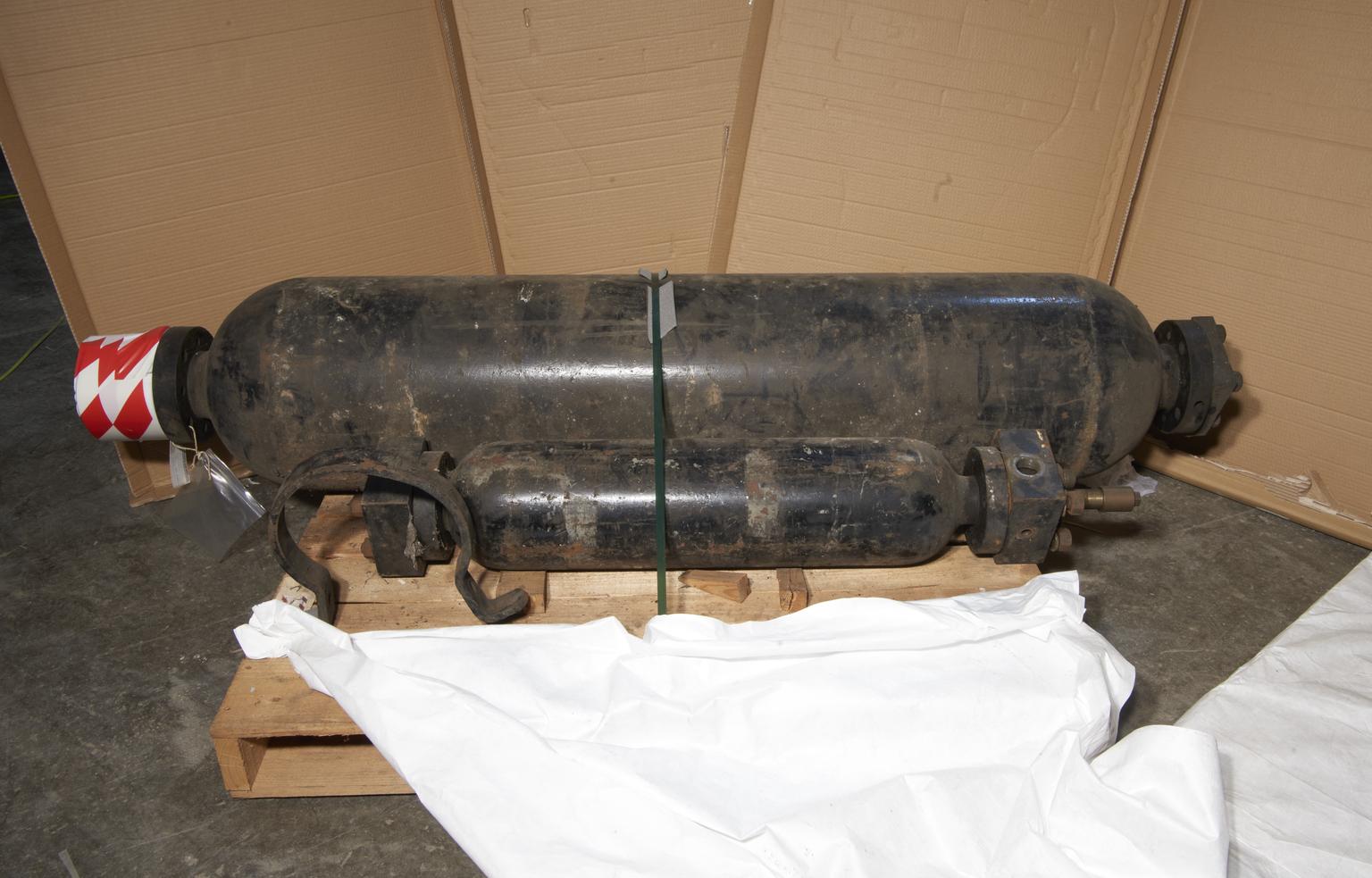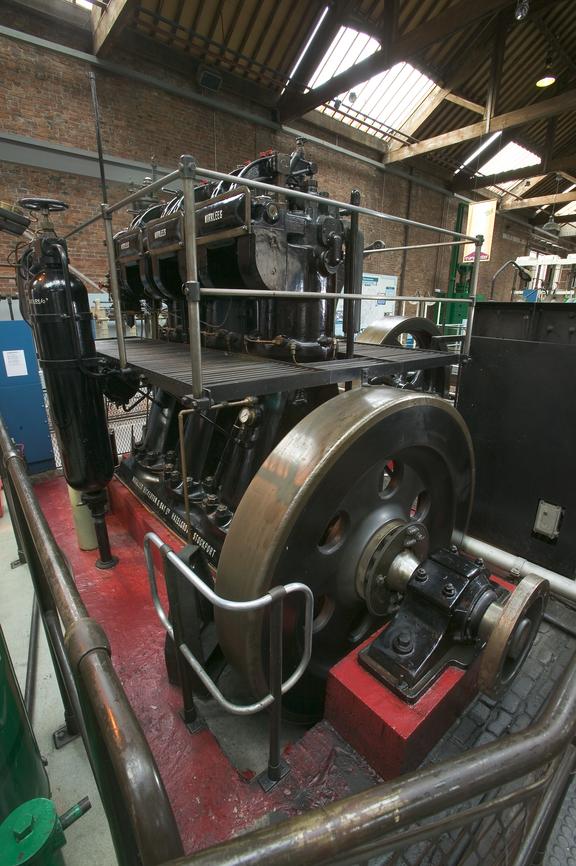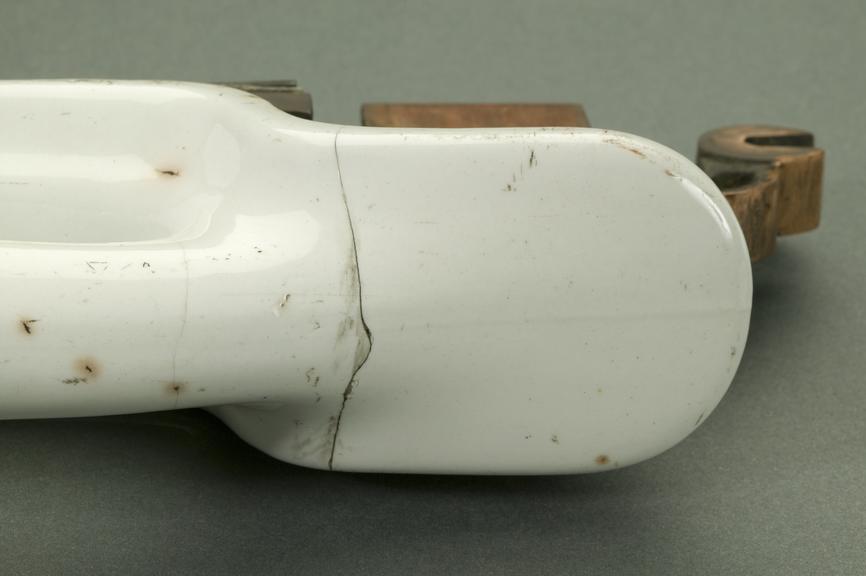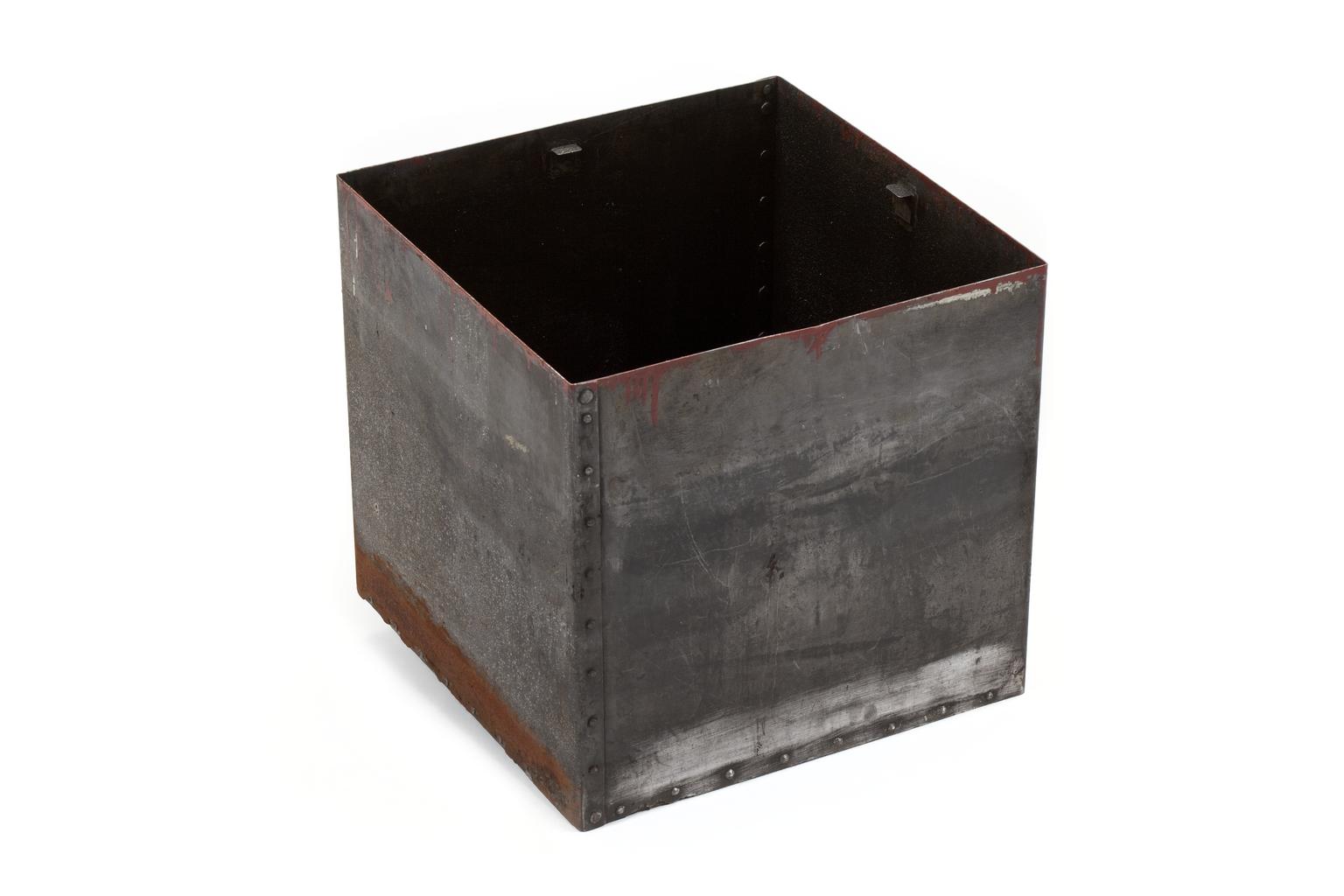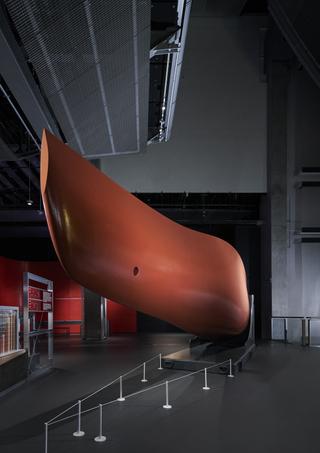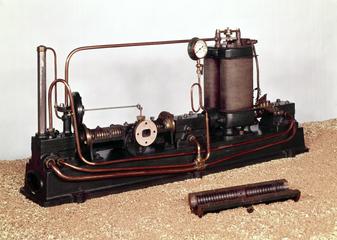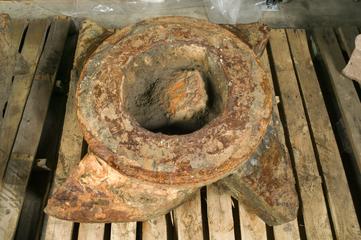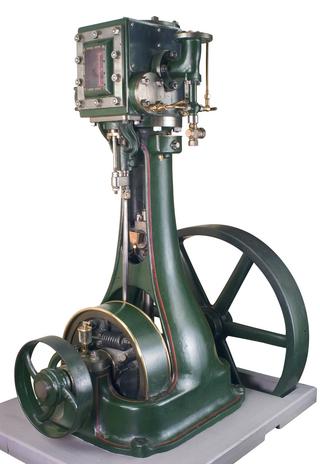Three-cylinder air-blast vertical diesel-injection engine, no.46724/27, made by Mirrlees, Bickerton & Day Ltd, Stockport, 1927. Poppet valve, air blast fuel injection, power output 165 horsepower.
This is one of four engines originally installed at the Mid-Kent Water Board Trotterscliffe Pumping Station near West Malling. They were used to drive pumps for raising water and remained in service there until the 1980s.
The diesel engine has its origins with the German engineer Rudolph Christian Karl Diesel, who developed the idea and took out the first patent in 1892. One of the biggest problems faced by Diesel was how to inject the fuel into the cylinder, given the very high pressure of the compressed air within. After trying a number of methods, Diesel decided to use an auxiliary compressor to produce a blast of compressed air to carry a small amount of fuel into the cylinder. This method, called air-blast injection, was used until the 1920s, when a more efficient method called direct injection (using a mechanical pump) was perfected.
In this Mirrlees air-blast diesel engine, the fuel is forced into the cylinder by air stored at a pressure of 1000 lbs per square inch in high-pressure cylinders next to the engine. The pressure is maintained in these cylinders by a compressor, which is driven by the main engine.
